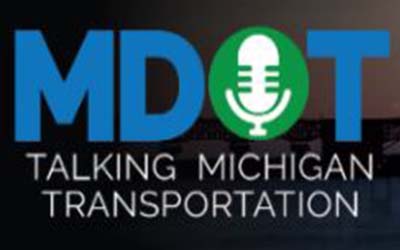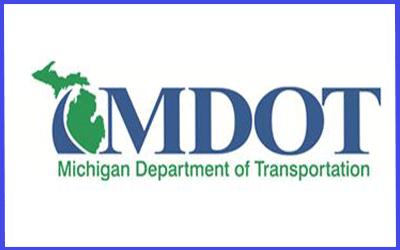
by orionontv | Nov 13, 2023 | Transportation
Senate committee takes up safety cameras to protect road workers
This week, the Michigan Senate’s Transportation and Infrastructure Committee heard testimony on legislation that would allow for the use of safety cameras to monitor the speeds of vehicles driving through road construction projects.
Listen now: https://www.buzzsprout.com/1374205/13943416-senate-committee-takes-up-safety-cameras-to-protect-road-workers


Pam Shadel Fischer, senior director of External Engagement at the Governors Highway Safety Association, returns to the podcast to tout the effectiveness of the technology in other states.
Later, Gregg Brunner, chief engineer and chief operations officer at the Michigan Department of Transportation, explains why he supports the legislation and his takeaway after viewing a demonstration of the technology along a busy freeway.
|

Michigan could join 17 other states employing the technology to lower speeds in work zones, according to the National Conference of State Legislatures.
According to the National Work Zone Safety Information Clearinghouse, more than 100,000 crashes occurred in work zones in 2020, resulting in an estimated 44,000 work zone injury crashes and 857 work zone crash deaths.
From a report on the topic from the Centers for Disease Control and Prevention (CDC): “The relationship between driving speed and the risk of a crash and/or fatality is well established. In 2019, 26 percent of all motor vehicle fatalities occurred in crashes in which at least one driver was speeding.”
|
|
|

by orionontv | Nov 9, 2023 | Transportation
|
State Transportation Commission approves
final 2024-2028 Five-Year Transportation Program
Fast facts:
- The State Transportation Commission (STC) approved MDOT’s final 2024-2028 Five-Year Transportation Program (5YTP) for transmission to the Michigan Legislature, state budget director, and the House and Senate fiscal agencies by March 1, 2024.
- The final 2024-2028 5YTP document is available at Michigan.gov/MDOT5YearProgram.
LANSING, Mich. – Today, the State Transportation Commission (STC) approved the final version of the Michigan Department of Transportation’s (MDOT) 2024-2028 Five-Year Transportation Program (5YTP) for posting on the MDOT website and transmission to the Michigan Legislature, state budget director, and the House and Senate fiscal agencies by March 1, 2024, as required under state statute. MDOT invited public and stakeholder input on the draft document from Aug. 7 to Sept. 9, 2023.
The 5YTP contains a list of planned projects for the MDOT Highway Program (state-maintained roads, bridges, and facilities), as well as information on the Public Transportation, Rail, and Aeronautics programs. The document helps connect MDOT’s long-range goals and strategies for asset management with project programming and monitoring of performance measures and budget targets. Highlights of this year’s 5YTP include:
- $15.8 billion in anticipated state and federally funded investments, with:
- $11.2 billion in Highway Program projects focused primarily on repairing and rebuilding MDOT roads and bridges, with Gov. Gretchen Whitmer’s $3.5 billion Rebuilding Michigan program contributing more than $592 million to that total.
- $4.7 billion in multimodal programs, covering MDOT Public Transportation (bus, marine, rail and ports) at $3.7 billion, and Aeronautics at $989 million.
- Highlights on Highway, Public Transportation, and Aeronautics program projects contributing to MDOT’s focus on equity and inclusion, transportation resiliency, and pedestrian and bicycle improvements, and
- A summary of public comments received during the comment period.
Accessibility:
Accommodations can be made for persons who require mobility, visual, hearing, written or other assistance. Please contact Orlando Curry at 517-241-7462 or [email protected]. Forms are located on the Title VI webpage. Reasonable efforts will be made to provide the requested accommodation or an effective alternative, but accommodations may not be guaranteed. |

by orionontv | Nov 7, 2023 | Transportation
Safety experts seek solutions to wrong-way drivers causing crashes
On this week’s edition of the Talking Michigan Transportation podcast, conversations with two people seeking to better understand the reasons for an uptick in wrong-way driving and to mitigate the risks.
Listen now: https://www.buzzsprout.com/1374205/13898507-safety-experts-seek-solutions-to-wrong-way-drivers-causing-crashes

First, Gary Bubar, a traffic safety specialist for AAA Michigan, talks about the trend and his organization’s awareness and education efforts. He explains that elderly drivers and those who are intoxicated are much more likely to be wrong-way drivers.

Speaking to the Detroit News (subscription) recently about wrong-way crash statistics, Bubar said, “These numbers are only insignificant if you’re not the one involved, or if you don’t know anyone involved. Across the country, we have about 350 to 400 wrong-way fatality crashes a year. If you’re one of those or related to one of those, that number is huge.”
Bubar also talks about the disturbing trend, highlighted in a Michigan State Police news release this week, of fewer people using seat belts.
|

Later, Erick Kind, Grand Region engineer for the Michigan Department of Transportation (MDOT), talks about some measures being implemented to help address wrong-way crashes on the US-131 freeway in Grand Rapids.
Kind talks about some technology being employed at freeway ramps where drivers have been found to enter in the wrong direction. These steps are in addition to some things MDOT and other departments have implemented in recent years:
- Lowered “Do Not Enter” signs to improve headlight angles.
- Added reflective strips to “Do Not Enter” and “Wrong Way” signposts.
- Added backside red reflective strips along the length of the off ramps.
- Added stop bars and turn arrows at ramp approaches, in addition to wrong-way arrows placed further back.
- Added turning guideline markings at ramps where the on and off ramps are adjacent to each other.
- Painted curbed islands at ramp terminals.
|
|
|

by orionontv | Oct 23, 2023 | Transportation
How transportation improves economy, quality of life
On this week’s Talking Michigan Transportation podcast, Shane Peck, communications and public involvement director and vice president at WSP, talks about a major study he co-authored examining the most effective way to explain the benefits of transportation.
Listen now: https://www.buzzsprout.com/1374205/13814309-how-transportation-improves-economy-quality-of-life

The research identified and tested a broad range of evidence-based themes and presented five key themes:
- “Transportation that works for everyone improves all our lives.” (Equity)
- “More reliable transportation makes your commute less stressful.” (Easier Commutes)
- “Improving transportation means you can get where you need to go – quickly and easily.” (Mobility)
- “Time spent sitting in traffic is time away from the important things in life.” (Time)
- “Investing in transportation creates more jobs in your community.” (Jobs)
Peck talks about how transportation agencies can capitalize on the research to better explain what they do.
|
|

by orionontv | Oct 16, 2023 | Transportation
FOR IMMEDIATE RELEASE MEDIA CONTACT
October 16, 2023 Diane Cross
[email protected]
I-75 weekend closures for culvert work in northern Oakland County begin Oct. 20
VILLAGE OF CLARKSTON, Mich. – Bridge and road work continues along the I-75 project between M-15 (Ortonville Road) and the Oakland/Genesee county line, with an expected completion date of that work in early November.
Additional culvert work in seven locations of northbound and southbound I-75 requires multiple weekend closures through late November/early December, depending on the weather.
Crews will be cutting open portions of I-75 to work on culverts 10 to 20 feet below the freeway, which will require closing the freeway and detouring traffic onto Dixie Highway. Only one direction of the freeway will be closed at a time with the opposite direction having one lane open.
The first weekend of this culvert work will be from 9 p.m. Friday, Oct. 20, through 5 a.m. Monday, Oct. 23, with northbound I-75 closed from US-24 (Exit 93) to Saginaw Road (Exit 106). Northbound I-75 traffic will be detoured via US-24 (Dixie Highway) (Exit 93) from the village of Clarkston and continue north to I-75 in Genesee County.
Southbound I-75 traffic will be detoured in Grand Blanc Township and exit at Dixie Highway/Saginaw Road (Exit 106), continuing on Dixie Highway to I-75 in Oakland County.
Additional planned weekend closures (more may be added, as needed):
Southbound I-75 will be closed from Saginaw Road (Exit 106) to US-24 (Dixie Highway).
Northbound I-75 will have one lane open from US-24 (Dixie Highway) to East Holly Road.
Northbound I-75 will be closed from US-24 (Dixie Highway) to Dixie Highway (Genesee County).
Southbound I-75 will have one lane open from Dixie Highway (Genesee County) to East Holly Road.
Southbound I-75 will be closed from Dixie Highway (Genesee County) to East Holly Road.
Northbound I-75 will have one lane open from East Holly Road to Dixie Highway (Genesee County).
Below is a list of current closures for bridge repairs:
Current:
- I-75 has one lane open in each direction under Rattalee Lake Road.
- I-75 has two lanes open in each direction from Baldwin Road (Genesee County) to Clarkston Road.
- East Holly Road has one lane open over I-75.
- Lahring Road is closed over I-75.
Updated:
- Grange Hall Road has reopened over I-75.
- Davisburg Road has reopened over I-75.
- Holcomb Road has reopened over I-75.
- Belford Road has reopened over I-75.
- Rattalee Lake Road has opened over I-75.
All bridges are expected to reopen by Oct. 31, with this year’s work ending in late November. Crews will return in the spring.
Funding for this project is made possible by Gov. Gretchen Whitmer’s Rebuilding Michigan program to rebuild the state highways and bridges that are critical to the state’s economy and carry the most traffic. The investment strategy is aimed at fixes that result in longer useful lives and improve the condition of the state’s infrastructure.
The Michigan Department of Transportation is investing approximately $160 million to resurface and repair I-75 from M-15 (Ortonville Road) to the Oakland/Genesee county line. This project includes resurfacing I-75, repairing 11 bridges, drainage improvements, culvert replacements, signs, and guardrail. Various work will be performed in different locations with different schedules throughout the 15 miles over four years.
Based on economic modeling, this investment is expected to directly and indirectly support 1,936 jobs.







